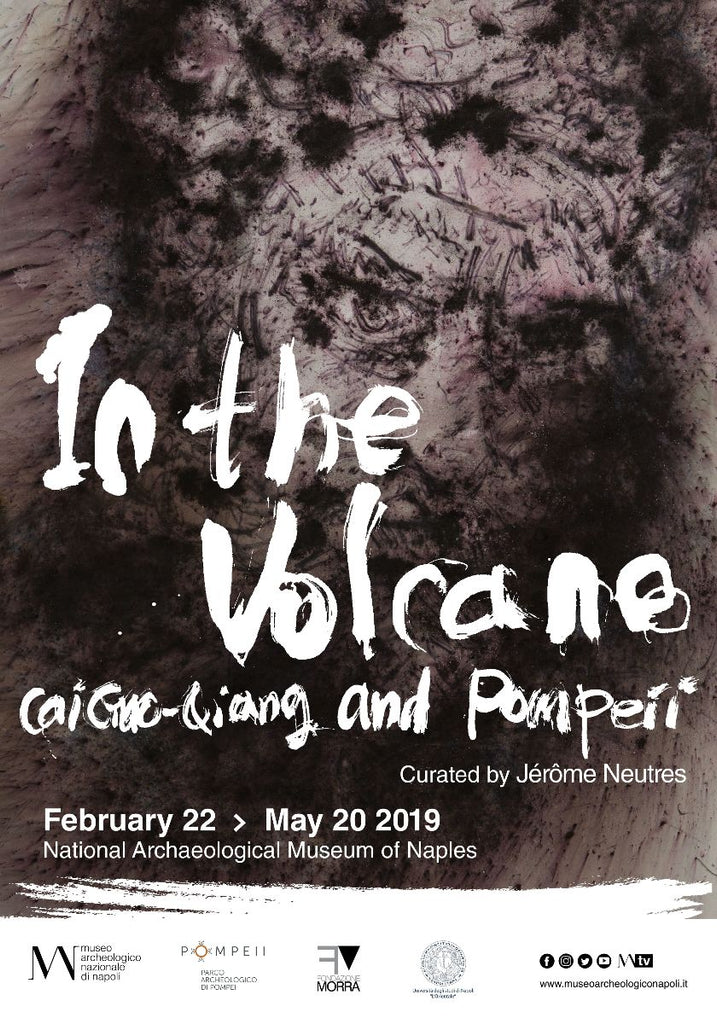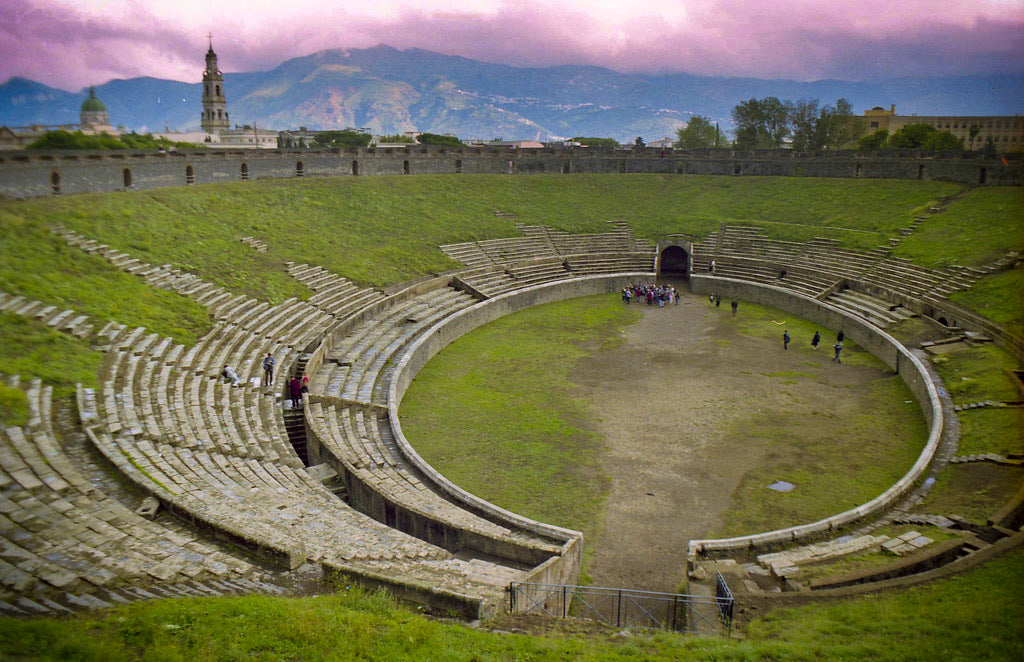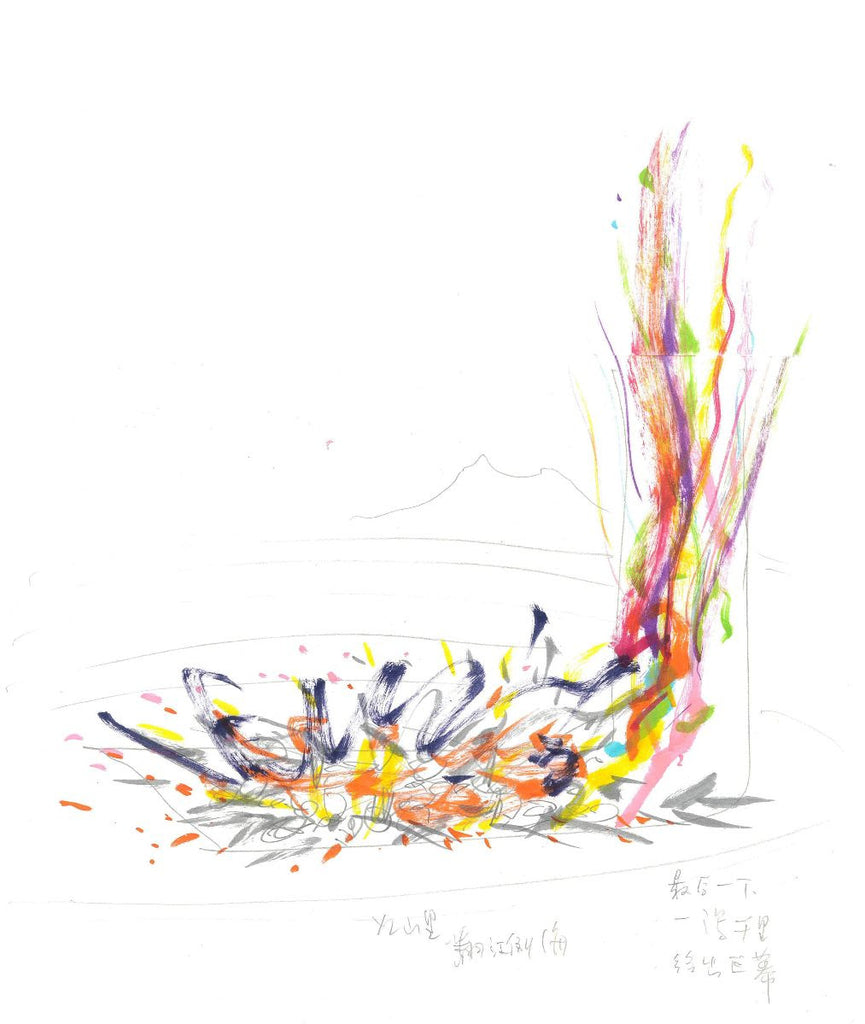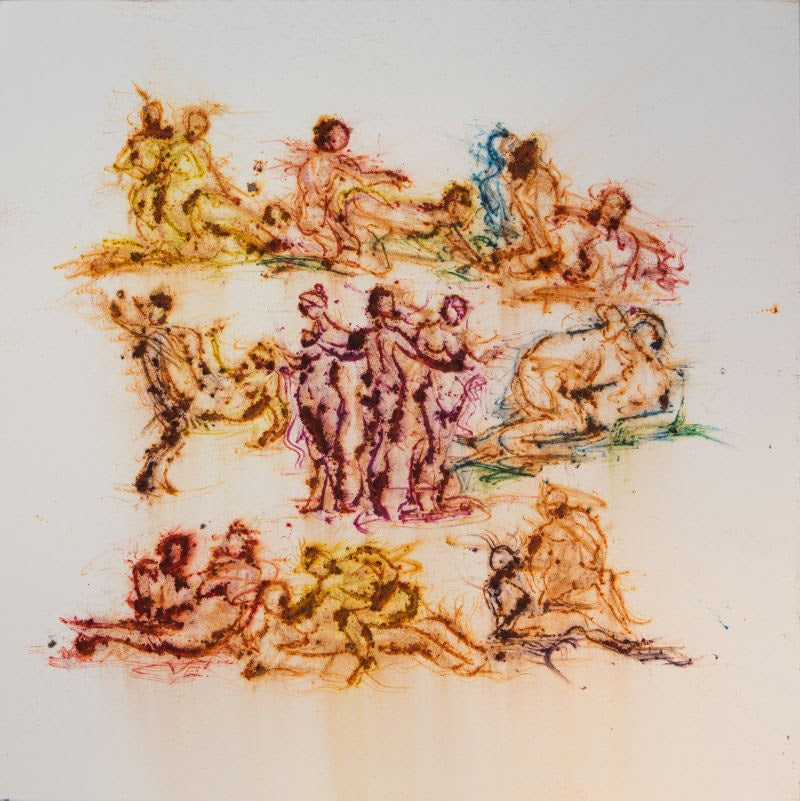
On February 21st, an explosion took place at the ancient remnants of Pompeii’s Roman amphitheater. It was staged and orchestrated by the renowned New York-based Chinese artist Cai Guo-Qiang, famous for his practice of “painting with explosives”. This is Cai’s second major art project in Italy after City of Flowers in the Sky with the accompanying solo exhibition Flora Commedia at the Uffizi Galleries—which closes on February 17, 2019. The aftermath of this site-specific gunpowder work In the Volcano will become a part of his solo exhibition at the Museo Archeologico Nazionale di Napoli curated by Jérôme Neutres, writer and curator, Director of Strategy at the Réunion des Musées Nationaux-Grand Palais, Paris, and President of the Musée du Luxembourg, Paris.

Amphitheater of Pompeii
In The Volcano is inspired by the history of the Roman city Pompeii which was buried by a volcanic eruption of Mount Vesuvius. In the middle of the amphitheater, Cai installed an array of artefacts such as replicas for ancient relics and sculptures and objects made of marble, glassware, frescoes, ceramics, and silk. He also installed a 33-metre stretch of canvas awaiting “archaeological excavations” after the explosion. The items engage with the ancient Roman art collection in the National Museum of Naples and refer to the decadent and hedonistic life of Pompeii before the tragic catastrophe. Working with a local fireworks company, he positioned a fuse for ignition, gunpowder and various kinds of fireworks. During the eruption, explosions burst between objects on the vast canvas and hundreds of fireworks illuminate the sky.

Cai Guo-Qiang, Sketch for Pompeii, 2018. Marker and pencil on paper; 33.6 x 27.9 cm. Courtesy Cai Studio.

Cai Guo-Qiang explains this work: “For this project, I have tried to let my hormones take the lead, creating something with a touch of ferocity. In a time when people often strive to be overly civilised, cautiously polishing and ‘cleansing’ their works and even concepts which attempt to explain their works’ significance, can’t I simply stage an uncontrolled eruption, recalling the volcano and Pompeii’s doomsday? A wholly unexpected occurrence—something that just comes our way!”
Jérôme Neutres, curator of the exhibition, states: “Pompeii is more than a Museum, it is the city of images. The city seems to live of and with art. For Cai Guo-Qiang, to dialogue with Pompeii is to leverage this world of images and its collective imagination. This dialogue is materialised in the design of the exhibition where works by Cai Guo-Qiang are hung at the core of the permanent collection, creating a sort of paper chase vacillating between the past and present, as well as a mirror effect between the aesthetic of Pompeii and that of the first century and the imminently contemporary art of Cai Guo-Qiang.”
Paolo Giulierini, Director of MANN also comments: “Projecting this extraordinary gaze ‘On the volcano, between Naples and Pompeii’ means rediscovering the inevitable links between the Classical past and modern sensibility. Persistent links that establish a new, disquieting, and surprising dialogue between the visitor and the masterpieces in the museum (among them the Venus Callipyge, the Farnese Hercules, the Atlas, and the bust of the Pseudo-Seneca).”
Article by Shuhan Mei
Videos
